Technique of special secrecy. Soviet radio-controlled land mines
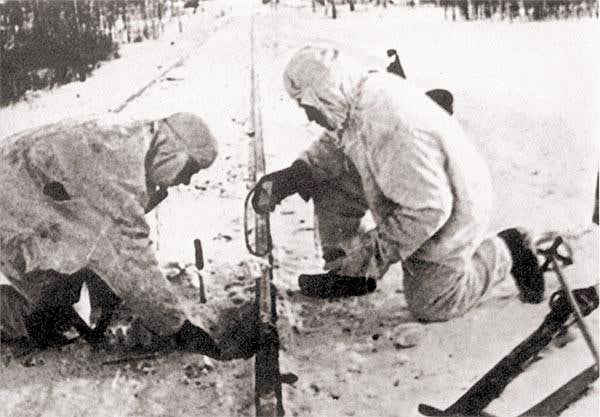
Many read in the books "For the Power of the Soviets" and "General" about the mysterious explosion in the October 22 of October 1941 occupied by the Romanian and German troops in Odessa. The commandant's office, located in the house of the NKVD Office in the Odessa region on Engels Street (formerly Marazlievskaya), exploded. A powerful explosion occurred at a time when a large meeting of the Sigurani (Romanian security service) and the Gestapo took place in the building. According to reports of Soviet intelligence officers, under the rubble of the commandant's office, before the 50 generals and officers of the occupying forces died. This was the result of the operation of one of the first radio-controlled mines installed during the Great Patriotic War.
Here is how the Hero of the Soviet Union, Colonel General of Engineering Troops A. Khrenov, described this use of radiofougas: “I was assigned to develop an evacuation engineering plan [from Odessa]: mining escape routes, dismantling coastal batteries, undermining military facilities, disguise, disinformation of the enemy, etc. d.
Special attention was paid, it would seem, to a completely non-military facility - the State Security House on Engels Street. The fact is that our intelligence has succeeded in obtaining a plan for the deployment of occupation troops in Odessa. In the house of state security the fascists planned to place the headquarters of the high command, the Siguranz and the Gestapo.
I make a decision: to secretly mine a building so that no outsider would know about it.
In strict secrecy worked in the building on the street Engels, Captain Pirus, lieutenant Pavlov, and with them a group of miners. Clusters of cobwebs hung everywhere in the basement: they did not touch her, they did not remove her — this was also an element of disguise. The floor is made of stone slabs. Above these compartments of the basement on the first floor will be located the offices of the fascist commandant of Odessa, the duty officer, and the reception room. On the second and third floors - the office of the head of the department and the meeting room ...
At dawn 16 October 1941, the last transport with heroic defenders of Odessa left the port. On these days, the underground security captain Vladimir Molodtsov’s group began to operate. Risking their lives, Molodtsov radioed our headquarters about the upcoming important meeting of the occupying authorities in a building on Engels street. This valuable intelligence information arrived on time. By the evening of October 22 1941, I gave the order to one of the radio stations of the Crimea - to use a radio-controlled landmine. "
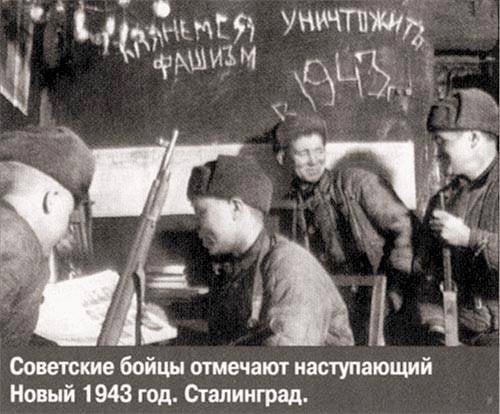
This explosion destroyed almost the entire generals of the fascist garrison. He was equal to winning the largest battle.
Secret weaponused by the Russians had by that time a long history.
18 July 1921, by decree of the RSFSR Labor and Defense Council, self-taught inventor Vladimir Ivanovich Bekauri was entrusted with “urgently implementing his, Bekauri invention of a military-secret nature”, and the Petrograd Economic Council was instructed to provide the inventor with a workshop and all the necessary materials for the work. Bekauri, a railway technician by profession, was an expert in disruptive business. Even during the first Russian revolution of 1905, he made homemade bombs and even made a gun for Georgian revolutionaries. In a matter of days, the Central Department of the Electrotechnical Laboratory (CETL) of the military department headed by G. A. Zabudsky, a new Special Technical Bureau for Special Purpose Inventions (Ostechbureau), was formed on the basis of the Petrograd-based military department. Its chief was V.I. Bekauri, and the technical manager - a prominent scientist in the field of electrical engineering and radio engineering professor Vladimir Petrovgrad Polytechnic Institute Vladimir Fedorovich Mitkevich. Lenin, who knew the professor as an experienced specialist in joint work on the GOELRO plan, advised him to involve him in this work.
The subjects of the work of the Ostekhbyuro were extremely diverse: mine and torpedo business; diving; aviation; communication; parachute equipment; telemechanics, etc. The most important of the inventions of V.I. Bekauri was the transmission of signals to military weapons over long distances by radio and the control of torpedo boats from aircraft by radio.
Subsequently, Major General of Technical Troops I. Artemyev, who had worked for a number of years at Ostechbyuro, wrote in his memoirs: “In 1924-1925, only the first broadcasting stations began to work, and the resulting explosion control tools were so new that many did not believe in their reality. However, Mikhail Vasilyevich Frunze, Chairman of the USSR Revolutionary Military Council and Commissariat of Defense, attached great importance to this invention in defense, provided Ostechbyuro with a great help and demanded to speed up the development of prototypes and equipment samples for adopting the Red Army.
Four years after the creation of the Ostekhbyuro, the first samples of instruments for controlling explosions at a distance were made and tested. The successful experiments were reported to the People's Commissar for Military and Naval Affairs M.V. Frunze. He ordered the preparation of demonstration tests of the model of the device for controlling explosions on the radio. The tests of new weapons, held in July 1925 in Leningrad, were attended by the People’s Commissar M.V. Frunze and a group of senior army commanders and fleet. The conditions for their conduct were as follows: five landmines with radio fuses were laid in a remote corner of the Leningrad port. In the Gulf of Finland, 25 kilometers from this place, there was a minesweeper “Mikula”. His radio station was to send conditional signals at a specific time set by the commission. During the demonstration, all land mines were blown up on the radio at a distance of 25 km in the order and at that time, which were indicated at the disposal of M.V. Frunze. When the clock showed the agreed time, five explosions rumbled. A series of subsequent tests of the high-explosive explosives passed satisfactorily.
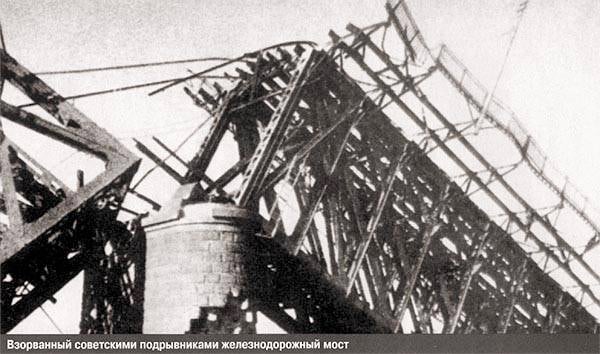
Success was achieved, but the Soviet designers set themselves a new task - to increase the range of the radio transmitter. Soon the instruments were significantly improved. The control range increased initially to 170 km, and then to 600 and 700 km. All this meant that the group of designers Ostekhbyuro under the leadership of VI. Bekauri built a highly sensitive battery radio, reliable encoding and decoding devices, fuses, small-sized power sources. And all this happened in the middle of 1920's!
By the year 1927, Ostebbyuro produced samples of advanced instruments for controlling explosions by radio, known as “BEMI” (according to the initial letters of the names of the inventors — Bekauri and Mitkevich). March 3 1927 of the year at one of the landfills near Moscow, the operation of the devices "BEMI" was demonstrated to the leadership of the Soviet Union. This time, the teams to blow up the mines flew over the radio from a distance of more than 600 kilometers. In the 1929 year, "BEMI" after extensive tests were adopted by the Red Army, and in the spring of the next year their mass production began in Leningrad.
At the beginning of the 1930-s, when preparing the western border areas of the South-Western, Belarusian and Leningrad military districts for a possible partisan war, among other activities, preparations were made for the destruction of a number of important objects in the rear of the enemy using radio-controlled mines, primarily .AND. Bekauri. In just five to six years, Ostebbyuro has become a research and development institution with a powerful experimental, production and testing base. Ostekhbyuro's work turned out to be very productive and had a significant importance in the development of military equipment. IN AND. Bekauri was awarded many state awards.
During the mass repressions in October, 1937 was arrested, and on February 8, 1938 was shot. Vladimir Ivanovich Bekauri was rehabilitated only after twenty years - 9 June 1956 of the year. His name, as an “enemy of the people,” was long ignored, and some inventions were attributed to others. Now justice has been restored, and the outstanding Soviet inventor Vladimir Ivanovich Bekauri will forever remain one of the outstanding Soviet scientists.
After his death, the radio telephones "BEMI" were improved by a number of other organizations. The laboratory of the Military Academy of Telecommunications and the Central Laboratory of Wired Means (CLPS) have developed other instruments for controlling explosions by radio. They differed from the devices "BEMI" not only in the cipher of signals for explosions, but also in the principle of operation. The training of highly qualified personnel for units equipped with radio-controlled mines was carried out at the Ulyanovsk Special Technology College.
In the engineering troops, separate radio engineering companies and special purpose platoons were formed, the so-called TOC units, armed with the “special secrecy technique” (TOC), designed to carry out explosions at a distance using coded radio signals.
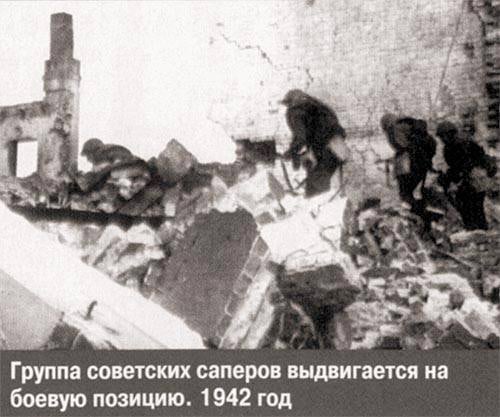
In the pre-war years, a great contribution to the creation of engineering mines, to the organization of their production and the improvement of methods for the use of mine-explosives in the troops were made by: I. Starikov, M. Onuchin, A. Semin, V. Antipin, B. Epov, J. Rabinovich, V. Yastrebov, M. Ovchinnikov, V. Kharchenko, A. Khrenov, I. Galitsky.
By the beginning of the Great Patriotic War and during the war, Soviet special engineering units were armed with tactical and strategic combat landmarks (FTD, F-10, etc.) with sophisticated radio engineering devices that were much more perfect than their predecessors. Separate companies and platoons of TOC began to widely use devices for explosions at a distance from the first days of the war. Improvement of devices "BEMI" continued during the war. Thus, in 1942, the Red Army adopted and adopted in mass production a device for controlling the FTD-K type explosive and mine explosions by radio, developed by a group of electrical and shipbuilding experts.
From the very first days of the war, Soviet miners began to use F-10 devices to explode landmine-controlled mines. They produced major damage deep in the rear of the enemy.
12 July 1941 for the first time in world military practice on the Northern Front exploded three radio-controlled landmines for 250 kg of trotyl each in the city of Strugi Krasnye. They were installed by a special mining company in the basements of three large buildings during the withdrawal of our troops. Encrypted radio signals to undermine the radiocouples were sent to a distance of 150 km on the instructions of the front engineer of the front lieutenant colonel B. Bychevsky from a special radio station located in a remote corner of the Gatchina forest park. The explosion was timed to the time when the mined buildings and courtyards were, according to intelligence, occupied by the Nazis. Two days after the explosion, our pilots photographed Strugi Krasnye. “In the photographs we saw,” writes Bychevsky, “ruins and huge craters in the place of the houses into which the commander of the special squadron, Yakovlev, was putting radiofugasy”.
On the Western front at the beginning of the war there was an 4 separate platoon of special mining. A platoon of Lieutenant Nikolayev laid guided mines in the town of Rzhev. A platoon of Lieutenant N. Baturin went from the Dnieper in the Rogachev region to the suburbs. On the highway between the cities of Nelidovo and Bely, at the abutments of bridges and on sections of roads going through the marshes, he installed radio-controlled land mines with powerful charges around 10 — less than 3 tons of explosives were laid! The Germans suffered heavy losses, and the huge craters that were formed significantly hampered the transport of German troops in the area. A platoon of N. Baturin laid two radiofugas in the two-story school building in the village of Dorokhov near Moscow. The simultaneous explosion of both land mines destroyed the building and buried about a hundred Nazis under its rubble.
Three platoons of special mining operated on the South-Western Front. A special-purpose engineering battalion was formed in Moscow.
One of the most famous episodes of the use of these weapons during the Great Patriotic War was the explosion of 1941 in Kharkov in November.
In mid-October, 1941, when the advanced units of the 6 th Hitler army, were already fighting on the outskirts of Kharkov, in the basement of a large administrative building on Dzerzhinsky Street, sappers of senior sergeant N. Sergeev from the operational engineering group I.G. Starinov at a depth of five meters installed a powerful bomb with the F-10 device. And in order to mislead the nazis, they put a regular time bomb on top at a depth of two meters.
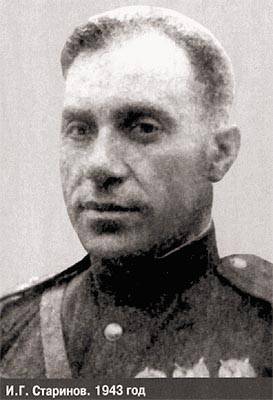 And here you can tell more about it, since the details of this operation were described in the memoirs of the head of the operative engineering group of Colonel I. Starinov “The saboteur’s notes”. Here's how I told about it later: “Already on October 3 I received a new order: to put the radio mine at the house number 17 on Dzerzhinsky Street. This house - a mansion, built in the early thirties for Secretary of the Communist Party Central Committee (B) U Stanislav Vikentyevich Kosior, was subsequently transferred to an orphanage, and now, after the evacuation of the kindergarten, it was removed by some leaders of the Party and the government of the Ukrainian SSR. Since the house lived and worked, I limited myself to inspecting the mansion from the street and figured out how much explosives would be needed for its complete destruction. After the seventh, we installed radio lines in the building of the headquarters of the military district, on the Kholodnogorsky and Usovsky overpasses, somewhere else. At various times, sappers pretended to equip bunkers and shelters, and at night in bags, bottles, and ammunition boxes they brought explosives to objects, laid them deep into the ground and installed sophisticated radio equipment, supplying them with explosives and locking devices that ensure the explosions of mines immediately adversary.
And here you can tell more about it, since the details of this operation were described in the memoirs of the head of the operative engineering group of Colonel I. Starinov “The saboteur’s notes”. Here's how I told about it later: “Already on October 3 I received a new order: to put the radio mine at the house number 17 on Dzerzhinsky Street. This house - a mansion, built in the early thirties for Secretary of the Communist Party Central Committee (B) U Stanislav Vikentyevich Kosior, was subsequently transferred to an orphanage, and now, after the evacuation of the kindergarten, it was removed by some leaders of the Party and the government of the Ukrainian SSR. Since the house lived and worked, I limited myself to inspecting the mansion from the street and figured out how much explosives would be needed for its complete destruction. After the seventh, we installed radio lines in the building of the headquarters of the military district, on the Kholodnogorsky and Usovsky overpasses, somewhere else. At various times, sappers pretended to equip bunkers and shelters, and at night in bags, bottles, and ammunition boxes they brought explosives to objects, laid them deep into the ground and installed sophisticated radio equipment, supplying them with explosives and locking devices that ensure the explosions of mines immediately adversary.... Access to the house number 17 for the necessary work received six people: military engineer 2-rank Hawks, military technician 2-rank Leonov, sergeants Lyadov, Lebedev, Sergeev and me. The house was located in the center of the city, standing in the depths of the garden, among the mighty oaks and lindens. Trees with lush foliage could reliably hide the sappers from prying eyes, even if the observer had settled somewhere above the stone fence and high cast-iron gates. In the evening of October 12 we entered this gate. The house stood on a high brick foundation, along the mezzanine stretched balcony. At the bottom of the building utility rooms and a small boiler room.
Having cleaned a part of the boiler house from coal near the inner main wall of the house, the miners opened the floor and began to dig a deep well, more than two meters deep. The extracted ground was gently poured into the bags. In the first bag - the first layer of soil. In the second - the second, in the third - the third. On each bag was a serial number, so as not to be mistaken when filling the well, to maintain the previous alternation of layers of earth. This is done in case the Nazi sappers try to search for a mine.
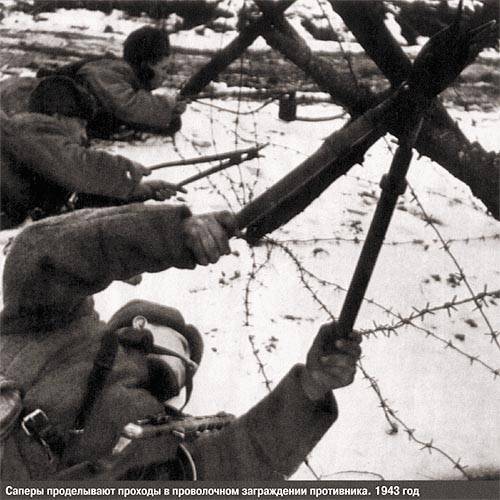
Digging out the well, the miners alternately descended into it, hollowing out a niche for radio equipment and a large explosive charge under the foundation of the inner capital wall. This is hard, time-consuming work. Only by noon 14 October in the well began to lower the boxes with tolom. The charge was set powerful: it was necessary to destroy all the invaders who would settle in the mansion, and at the same time grab the external fascist guard of the building. And in order to discourage the enemy sappers from searching for mines and their demining, the radio operative was made incurable. After that, they carefully masked the place of its installation and destroyed the traces of work. It remained to “calm” the enemy, to throw him a “formidable Soviet mine”: we understood perfectly well that, not finding any mine in such a beautiful mansion, the enemy would be alert and most likely would not populate the house. We installed in the boiler room "mine mines". In the corner, under a pile of coal, donating precious explosives, mounted a complex time bomb, providing it with various additional devices for blasting. In fact, all these devices, quite serviceable, ingenious and seemingly extremely dangerous, completely ruled out the possibility of an explosion "spinners" due to the fact that dry batteries were no longer usable.
Having dealt with this case, the miners brought the floor of the boiler room to the original condition, and the ceiling was broken, anointed with fresh cement and whitened. Upon entering the boiler room, in order to check which room we were leaving, the guard of the mansion, of course, fixed their eyes on the ceiling and walls. Neither the floor that hid the 350-kilogram charge of tola, nor the heap of coal where the lures were hiding, nothing instilled suspicion ...
In the twentieth of October, the battles were already on the outskirts of the city. Cozy mansions on Ivanova Street, on the Pool, on other streets, on other lanes are empty. How to make the fascist authorities choose not these mansions as their residence, but a mined mansion on Dzerzhinsky Street?
The military council approved the decision to imitate the mining of the best houses. Starting in October 19, a pickup truck with mine workers who became familiar to the population in the afternoon drove into the mansions in the open. The miners carefully removed the boxes with "explosives", spent a lot of time inside the buildings, went out, and drove on. Within three days, the Hawks, Leonov, Lyadov and other demolition men traveled more than ten houses ...
On November 10, the operational engineering group had to drink the cup of bitterness: intelligence delivered a copy of order No. 98 / 41 issued by the command of one of the German units of the [516 th Infantry Regiment of the 68 th Infantry Division] 8 in November 1941 to the Southwestern Front Headquarters. In the order it was reported that in the attack of the “gallant Fuhrer’s troops” on Kharkov and in Kharkov itself, a large number of Russian engineering mines were found, and among them were ticking mines with watch closures and electrochemical fuses. The Russians, they said in the order, tried to hide mines, digging them to a depth of two and a half meters and using wooden boxes for the mines, which did not allow the use of mine detectors, which, however, were not required, because, they say, “inept laying of mines and inept their disguise allowed experienced Reich sappers to do without mine detectors. ”
A copy of the said order was delivered to me with an accompanying note written in an unfamiliar but energetic handwriting: “These easily detectable and neutralized mines were installed under the guidance of Colonel I.G. Starinov.
I did not have time to give explanations to the military council of the front, did not have time to point out the moments, clearly indicating that the order of the fascist command was fake, when new news came: German sappers removed from the basement of the house number 17 on Dzerzhinsky Street a particularly difficult mine, and now the house has a boss of the fascist garrison, General Georg von Braun.
- Well, what do you say? - asked General Nevsky, when I read the typewritten text.
- Only one thing, comrade general: the fascists didn’t learn the “minnow”, but the minnow!
- Sure?
- Absolutely sure! Sorry, comrade general, but I believe in myself and my comrades more than the fascist bastards ... ”
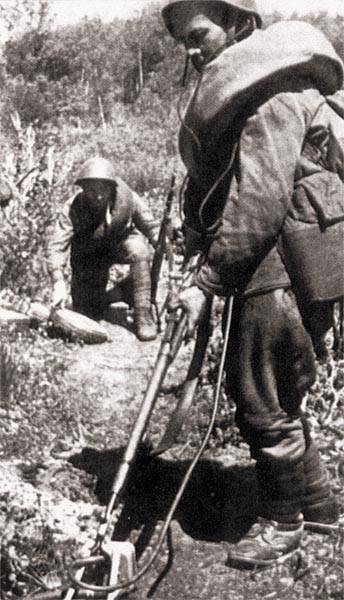 The calculation of our miners was justified. The Germans were able to detect and extract the top mine. At this they calmed down. Major-General von Braun, head of the garrison of Kharkov, entered the building with his headquarters. However, he lived there for long.
The calculation of our miners was justified. The Germans were able to detect and extract the top mine. At this they calmed down. Major-General von Braun, head of the garrison of Kharkov, entered the building with his headquarters. However, he lived there for long.Starinov recalled: “Late at night from 13 to 14 in November 1941, General Nevsky, the head of the front engineering department, Major Chernov, and I, taking a strictly secret cipher, went to the Voronezh broadcasting station. They were waiting for us there. In addition to the military, civilians were involved in the upcoming operation: Arkady Vladimirovich Bespamiatov, a senior engineer of the Voronezh radio station, and Fedor Semenovich Korzhev, head of the radio station. They were dedicated to the individual details of the operation. The design of the local radio transmitter was old, but before the war it was reconstructed, improved, and it had enough power.
After removing all those who had nothing to do with the case, we sent the first radio signal to 3 15 minutes 14 in November. Later, on different waves, they sent several more signals with different ciphers. The last is at six in the morning.
The control reception of signals, carried out near Voronezh, showed that they are strong. But was their power enough for Kharkov?
Has the operation completed successfully? That we did not know.
The plane sent by 14 for reconnaissance in November was photographed by the districts of Kharkov that are of interest to the military council. The pictures confirmed that at least some of the radomin exploded with great effect. Unfortunately, the area of Dzerzhinsky Street was not included in the lens of an aviation camera. It turned out to be impossible to determine whether the radio room exploded in house number 17. ”
The house on Dzerzhinsky Street blew up. Under the rubble, the garrison commander, commander of the 68 infantry division, General von Braun, and several dozen officers of the headquarters of this division found their graves. Unexpected explosions in the rear of the enemy created panic and inflicted significant damage to the fascist troops. In Kharkov and its environs, many cars and several trains were blown up. From the 315 time-delay mines installed by the 5 and 27 railway brigades, the enemy found only 37, defused 14, and 23 was forced to undermine, resigned to the destruction of the path in such cases. Immediately after the capture of the city, the Germans were unable to use Kharkiv airfields, which had the most advanced concrete runways in those days. The detonation of ticking mines at aircraft stops, powerful fragmentation mines on the airfield and in hangars did not allow the occupants to use Kharkiv airfields until the late spring of forty-two.
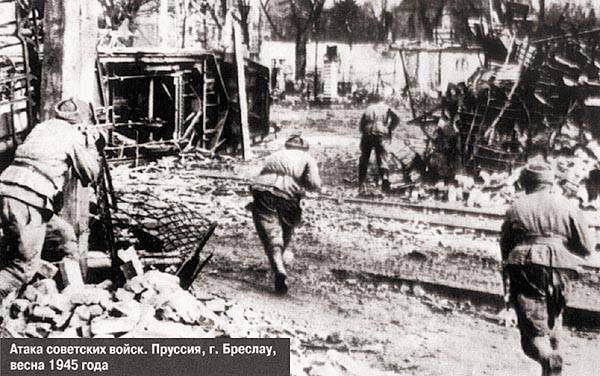
Here is how one of the officers of Hitler’s headquarters, who entered Kharkov in October with units of the Wehrmacht, described it in his diary: “The city is occupied. Still burning at home. The big empty city is restless. Everything lurked in it ... It was drizzling on the street. Almost all remaining hiding in the house. The population is not accustomed to the new order. It is scared. Gunfire gunfire no longer heard, no planes appear over the city. We are driving in a car, examining the former second capital of Ukraine. Suddenly, we hear the roar of a strong explosion. The mass of cyclists rushed to the scene of the explosion, and we went there. The site of the explosion is cordoned off. Once again, a car or a hellish car exploded, which explodes after a certain period of time ...
In the evening, a mine exploded near our house. ... After the explosion of several mines and the loss of officers and soldiers, an order was issued - not to settle in non-residential houses.
The first mines were discovered already seventy kilometers from the city. For the first time, our sappers met with a new sample of various mines with a clockwork and a chemical fuse. On the basis of the state of the soil and mainly according to the testimony of defectors and some residents of the city, ten different kinds of mines were extracted. Among them were mines with a charge of two hundred grams to two hundred kilograms. There were mines made of large projectiles that flew out of the ground and exploded, destroying all life around within a radius of up to fifty meters. Sapper troops showed samples of mines found ...
Other samples exploded while trying to demine them, and the soldiers who did this work were seriously injured, for example, a similar mine weighing two hundred grams tore both hands from one corporal and knocked out an eye. A lot of ticking mines were also found. Our units met a similar number for the first time ... We guessed that only a very insignificant part of these mines was found, only one - two, and on the roads that we considered unmined, the mines continued to explode further.
In addition to roads, mines exploded on airfields, on railways, everywhere, but the worst thing was the mining of roads and airfields. On the airfields a day exploded up to five minutes, but no one knew where the next one would explode ...
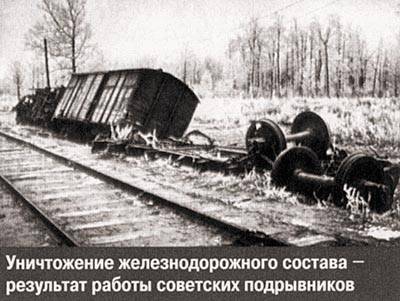 Once a mine exploded of unheard of power in a hangar where installation work was carried out, and valuable specialists were killed. This hangar could not be used anymore. Mines exploded on the edge of the airfield, not far from the aircraft there; there were wounded among the pilots and planes were crumpled; these damages were caused by the clods of earth falling on the planes.
Once a mine exploded of unheard of power in a hangar where installation work was carried out, and valuable specialists were killed. This hangar could not be used anymore. Mines exploded on the edge of the airfield, not far from the aircraft there; there were wounded among the pilots and planes were crumpled; these damages were caused by the clods of earth falling on the planes.All means for detecting mines were used. All captured sappers were questioned. We announced to the public that for each mine issued a reward would be given, and for concealment they were threatened with execution. Unfortunately, however, the population gave out a very small number of mines ... The destruction of mines was carried out mainly by prisoners, who were injured or killed in the process ...
The enemy, apparently, specially dug false wells and buried pieces of metal and boards in them, masking them badly ... Often a mine was put on a piece of metal, which exploded at the slightest detection, and this forced us to blow up all suspicious places.
In some parts of the roads, detours were made due to frequent explosions. It slowed down the movement and communication and increased fuel consumption by half and tripled.
Once we were forced to turn off the asphalt road, because on it, not far from the gaping pit, lay a broken ten-ton; the day before she hit a time bomb and exploded. The driver and his companions were killed. We had to spend five hours on thirty kilometers, whereas on the road that was mined, we would need only fifty minutes to do it.
But the most dangerous mine is mine on the railway. There, with the collapse of only one train in the area where normal traffic was restored, more than a hundred people died. In the city itself and its environs, many cars and several trains that have fallen on mines, hundreds of soldiers died ... However, mine explosions do not stop, it is becoming more difficult to find them every day, and according to the testimony of prisoners, the mechanism of many mine samples will act only after three or four months ; during the remaining three months we will lose many more cars and trains. Already, the losses due to mines that we suffered after the seizure of the city surpass all losses directly related to its seizure ...
Our first encounter with systematic mining cost us dearly. We must take new countermeasures, because otherwise we will have to build new roads and railways, airfields and warehouses in the occupied territory. Our task should be to fight mines. Without overcoming them, we will not be able to move and act freely. ”
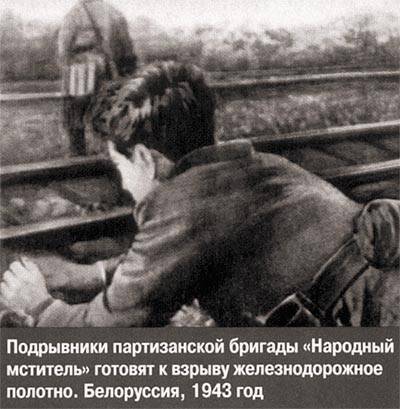 Reports of unpredictable and unexplained explosions came to Hitler’s command from other fronts. Analyzing these reports and intelligence data, the German experts realized that they were dealing with a new engineering ammunition. However, they did not manage to find out what he is. In December 1941 of the year, a secret order from Hitler fell into the hands of Soviet troops, which said: “Russian troops, retreating, use“ hellish machines ”against the German army, the principle of action of which has not yet been determined. Our intelligence has established the presence of special training radio engineers in the combat units of the Red Army. All the heads of the POW camps should review the composition of the captured Russians in order to identify the specialists of this nomenclature. When detecting prisoners of war, radio special engineers-specialists of the latter are immediately transported to Berlin by plane. What to report on the team to me personally. "
Reports of unpredictable and unexplained explosions came to Hitler’s command from other fronts. Analyzing these reports and intelligence data, the German experts realized that they were dealing with a new engineering ammunition. However, they did not manage to find out what he is. In December 1941 of the year, a secret order from Hitler fell into the hands of Soviet troops, which said: “Russian troops, retreating, use“ hellish machines ”against the German army, the principle of action of which has not yet been determined. Our intelligence has established the presence of special training radio engineers in the combat units of the Red Army. All the heads of the POW camps should review the composition of the captured Russians in order to identify the specialists of this nomenclature. When detecting prisoners of war, radio special engineers-specialists of the latter are immediately transported to Berlin by plane. What to report on the team to me personally. "Radio-controlled mines were used by the Red Army in the defense of Moscow, and later of Stalingrad, Kursk and other cities. In his memoirs, Marshal of the engineering troops V. K. Kharchenko, during the years of the Great Patriotic War, the chief of staff of the engineering brigade for special purposes, noted: “Soviet-controlled mines caused considerable losses to the Nazis. But it was not only that. The F-10 devices, along with ordinary time-mines, created nervousness in the enemy’s camp, made it difficult to use and restore ... important objects. They forced the enemy to waste time so precious for our troops in the harsh summer and autumn of 1941. ”
Radio-controlled mines were used until the summer of 1943. After the defeat of the German fascist troops on the Kursk Bulge, the Red Army launched an offensive on all fronts. Under these conditions, the need to use radio-controlled mines has already disappeared.
After the fall of Berlin, Colonel V. K. Kharchenko, Deputy Commander of the 1 Guards Engineering Squad Brigade, asked during the interrogation of the prisoner-in-chief of the fascist headquarters of General G. Weidling, where time bombs are set in Berlin and whether there are any bombs exploded on the radio.
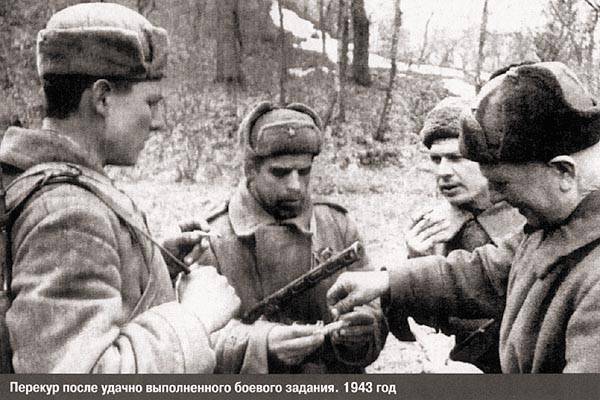
Hitler's general did not hide anything: “In addition to the usual anti-tank and anti-personnel mines, we in the city did not use anything. First, there was no time, and they did not have the appropriate equipment. As for the radio fights, your engineers are far ahead of ours ... "
The result of the combat use of one of the most formidable weapons of the last war - “TOS” can be the penetrating words of I.G. Starinova: “... I remembered with excitement and gratitude the creators of the wonderful radiohemines - the engineers VI. Bekauri and Mitkevich, General Nevsky, military engineer Yastrebov, military technician Leonov, young lieutenants of Kharkov, commanders of railway brigades Kabanov, Pavlov and Stepanov, sergeants Lyadov and Shedov, Lebedev and Sergeyev, miners Sakhnevich and Kuznetsov — all of those who had put the charges, who had put the charges, who had put the charges, in such cases. selflessly worked in Kharkov in the fall of forty-one, turning the city into a trap for a sworn enemy. Their military work was not in vain. "
Information